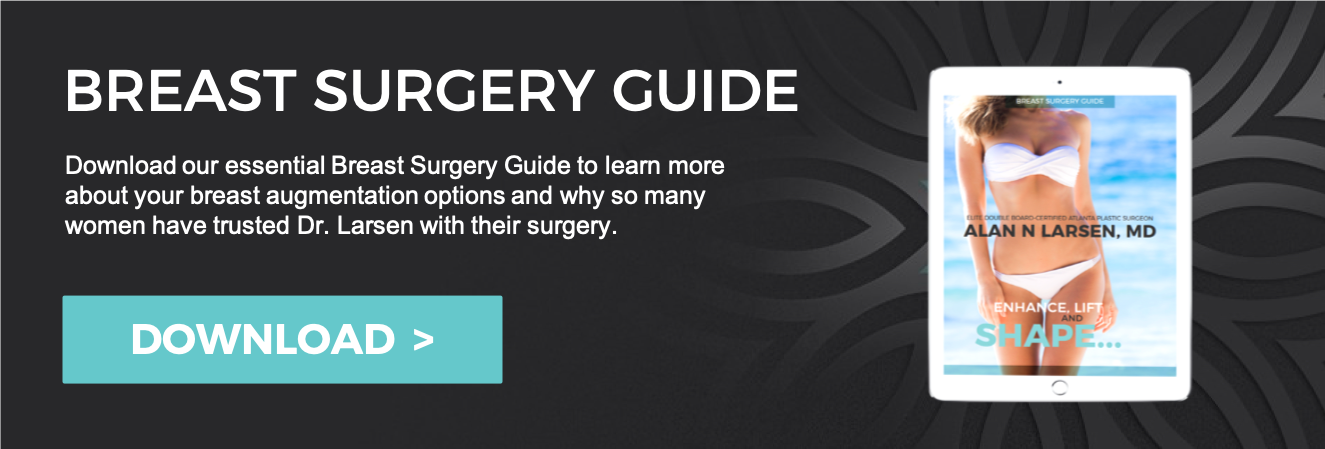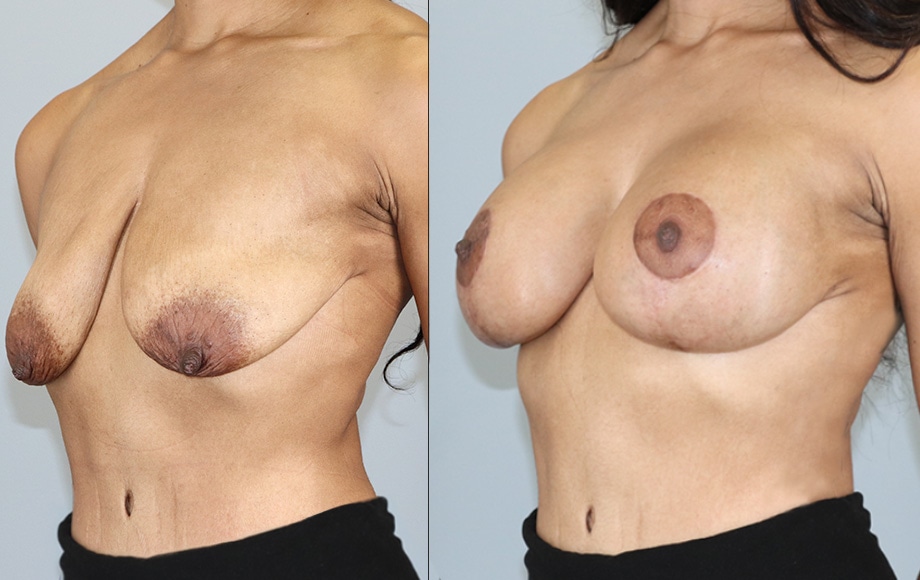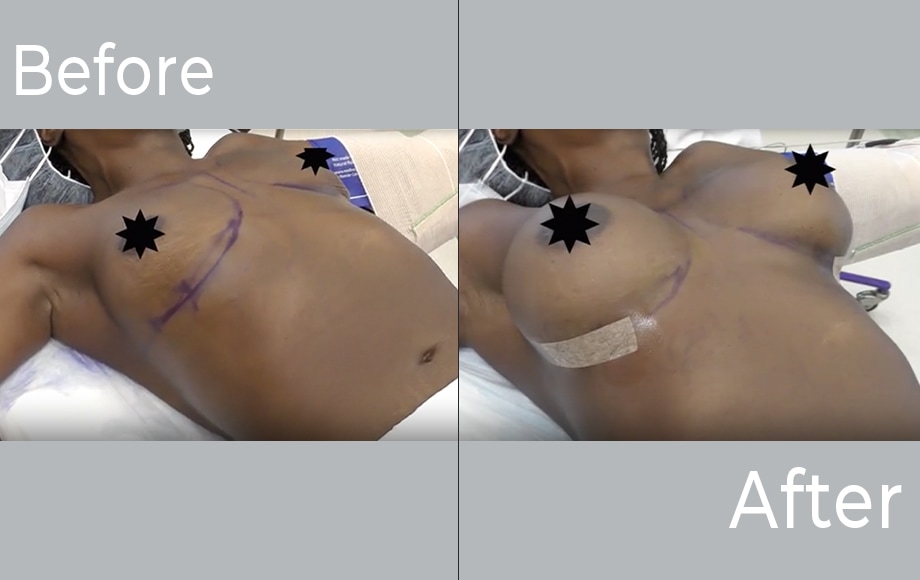Breast augmentation has quickly become the most popular forms of cosmetic surgery in America. Over three hundred thousand women choose to undergo breast enhancement surgery each year. Many women desire breast surgery in order to satisfy their desire for fuller larger breasts, or to regain their breasts after losing them to breast cancer or significant weight loss or have seen their breasts change as they got a little older, or had children, and want to regain the look they had when they were younger.
Even though it is one of the top cosmetic procedures in the United States, recovering from a breast augmentation is a process that you will need to prepare for both mentally and physically. There is some discomfort and mobility limitations for a few days but the key to a successful recovery is to take the pre and postoperative care instructions from your surgeon seriously and consult with your plastic surgeon whenever necessary.
Having a breast augmentation can be very exciting and women are extremely satisfied with the results of their surgery. If you’re considering a breast augmentation procedure, learning what to expect from the healing process can better prepare you for what’s to come therefore making the overall experience a pleasant one.
Postoperative Recovery Stages
Once the anesthesia has taken effect, your plastic surgeon will make an incision to create a space within your breast tissues for each breast implant. You will discuss your incision options with your doctor before your surgery. The breast implants will then be placed and positioned for optimal appearance and symmetry.
You should expect your progress toward full recovery to occur in stages. It is difficult to say the exact timing of your recovery since every person’s body is different, and some may take longer to heal while others take less time. However, you will see instant results in your breast size after your procedure, and the incision(s) will heal and fade with time. Below are average postoperative recovery stages that you can expect after surgery:
Post-operation—As soon as you wake up from the anesthesia, you’ll feel sore and drowsy. Your breasts will be wrapped in an ace bandage or post-surgical bra garment. It will take a couple of hours before the grogginess wears off. A driver is required to drive you home after surgery anytime general anesthesia is administered. It is also recommended to have someone stay with you for the first 24 hours after surgery to assist with postoperative care and comfort and ensure you are eating well, staying properly hydrated and taking prescribed medications as directed. Make sure you follow your surgeon’s instructions and take any prescribed medications.
Days one to five— Be sure to make sure you clear your calendar from any major obligations for the first 2-5 days. Prep your family, friend or designated caregiver for the first few days. Having help around the house after surgery makes a positive difference. Have them keep a journal of your medications and the times you take each one and have them keep you on the schedule prescribed by your surgeon. Be sure to stock up on water and easy to eat highly nutritious foods.
You will experience the most discomfort during the first three to five days, but your doctor will prescribe you pain medication to help alleviate and manage pain and discomfort. It is advised to rest and take it easy to allow your body to heal throughout this period. Many women describe their recovery as tightness and pressure as your skin adjusts to the implants. Working out or activities that require lifting, pushing and pulling is not recommended for the first 2-3 weeks. Though, most ladies typically return to a sedentary job (like a desk job), after just a few days.
Your surgeon will most likely have you do daily breast massages after surgery to help promote healing and avoid common post-surgical complications. Massage gently helps to move your implants into place and helps to keep the implants and your breasts soft, supple and looking more natural. Most importantly, massage may reduce the risk of a condition known as capsular contracture, scar tissue hardening around your implants.
Ask your surgeon when you can partake in activities but walking is typically encouraged immediately after surgery and a great way to help activate your body without putting too much strain on it. Remember, it’s important to keep chest and upper body exercises to a minimum to avoid too much strain and post-operative bleeding or complications.
Once cleared by your surgeon, typically around 2-3 weeks, you can amp up your exercise routine to include light aerobics and lower body strength exercises. Exercising will help your body recover faster because it stimulates your immune system and activates anti-inflammatory compounds to make their way to your “injury” (the body sees an invasive surgery like breast augmentation as an injury).
After 2-3 weeks—at this point, your body should be in full recovery. There may be times where you still experience a little soreness or discomfort, especially if you are slowly integrating upper body exercises and move back into your routine, but it should not hinder you from completing your daily tasks.
You should have regained a full range of motion in your upper body, even if you do have to take it slow. More than anything, it is important to consult with your doctor after 2-3 weeks before you start more strenuous exercises, including running, horseback riding, swimming, and anything that involves exerting the upper body or elevating your heart rate over 100.
Recommendations for Successful Recovery
Because you will experience some soreness and swelling after a breast augmentation, you should focus on reducing the strain to your chest area as much as possible during your recovery.
1. Prepare Before Surgery
Grocery shopping, prepping for easy meals and cleaning your house are all good ideas to allow for a less stressful and seamless recovery. Having these chores done means you have more time to rest once you get home.
2. Get Help
Before your surgery, it is advised to coordinate with a friend, family member, or partner to be your caregiver after the surgery. Their tasks can include driving you home from the hospital, aiding in household chores, preparing meals, and tending to children, if you have them.
3. Rest
Getting plenty of rest and eating fortifying foods is the best way to ensure a smooth recovery. You should also stay hydrated—drinking mostly water—as this helps your body heal properly. If you find it hard to maintain an appetite because of your soreness, trying eating light, ready-to-eat snacks throughout the day to maintain your appetite and energy levels.
Breast Augmentation Reviews with Dr. Larsen
Don’t take it from us, read some of the wonderful things breast augmentation patients in Atlanta had to say about Dr. Larsen.
“Between Dr. Larsen, the ladies in his office and the medical staff at Northside, everyone was absolutely outstanding. Extremely knowledgeable about the procedure, what to expect before and after surgery, anything between. Would recommend Dr. Larsen to anyone who was looking for a breast augmentation or the Med Spa for additional products.”
“My experience with Buckhead Plastic Surgery was amazing, from my consultation to all my follow up appointments it has been wonderful. The staff is always helpful and friendly. Dr. Larson was amazing, he listened and answered all or my questions and always made me feel at ease. My results from my breast augmentation have been fantastic I love my new look!”
Interested in learning more about Buckhead Plastic Surgery and how Dr. Larsen can help you with your breast augmentation in Atlanta? Download our Breast Surgery Guide or book a 15-minute consultation to learn more!








